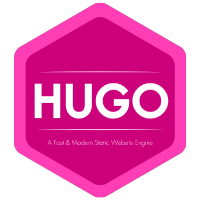Create Your Static Site with Hugo

There’s many different options when it comes to generating a static site, Jekyll, Hexo, Gatsbyjs, MkDocs, Wyam, and many more. So why did I choose to create this blog with Hugo?
No reason. I just did. All of these options are viable for creating something like a blog, but I do suggest if your use case is more complicate and you have some experience with React, then do check out Gatsbyjs.
Let’s Get Started
First off, you’re going to need to have Git and hugo installed. If you haven’t used Chocolatey, this is so easy to install hugo. Simply open a PowerShell console and run this command.
choco install hugo -confirm
Now that’s hugo is installed, you can create your new site
hugo new site myHugoSite
Make it pretty
If you’re like me .css is not a strong suit. But behold this magic: Head on over to themes.gohugo.io and pull the git repo on whatever theme you like best into your themes folder in your project:
cd myHugoSite
git init;
git submodule add https://github.com/Vimux/mainroad
Now open your config.toml configuration file and set the theme to mainroad.
theme = "mainroad"
Write it up
Create a new markdown file and write away.
hugo new posts/firstPost.md
Take a gander
You can start a development server to see what your content looks like:
hugo server
Commit your site to GitHub
When you’re ready commit your source code to your GitHub repository.
Deploy to Netlify

Sign up on Netlify with your GitHub account. You can hookup your Git repo to Netlify and literally deploy your site just by committing your source code.
Did I mention that all of this is free?
